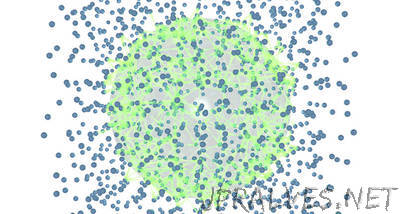
“When Cornell physicists Robert Richardson, David Lee and Douglas Osheroff received the 1996 Nobel Prize for their discovery of the superfluid state of liquid helium, it was only the beginning. Now a new team of Cornell researchers, building on that work, have found new complexities in the phenomenon, with implications for the study of superconductivity and theoretical models of the origin of the universe. “We wanted to see new phase transitions,” said Jeevak Parpia, professor of physics. As it turned out, he saw a more “efficient” transition compared to any observed before in helium. The results are published July 3 in the journal Nature Communications. Parpia and his research group collaborated with a group led by John Saunders, professor of physics, at Royal Holloway, University of London. When the isotope of helium known as helium-3 is cooled to 3.2 degrees above absolute zero it changes from gas to liquid – what physicists call a “change of state.” Cool it further – to about a thousandth of a degree above absolute zero – and it becomes a “superfluid” that can flow without resistance from its surroundings. If you put some of it in a circular channel and start it flowing around the circle, it will flow forever, not slowed by friction. This behavior of helium is of great interest because electrons in a superconductor also behave as a superfluid, flowing without resistance from the atoms in the conductor. To look for the transition, Parpia’s research group used the Cornell NanoScale Science and Technology Facility to make a “torsion pendulum” head, a silicon disk 14 millimeters in diameter, in which they etched a circular channel 3.5 millimeters wide, adding a glass cover to make the cavity 1.08 microns (millionths of a meter) high. Rotating the disk forward and back makes the superfluid helium flow around in the cavity, and the amount that is superfluid can be observed as a change in the period of oscillation of the disk. The researchers observed the two phases of superfluidity that Richardson, Lee and Osheroff had reported, referred to as A and B. They also found that the A phase could be “supercooled” but nowhere as much as it can in larger, bulky experiments.”
